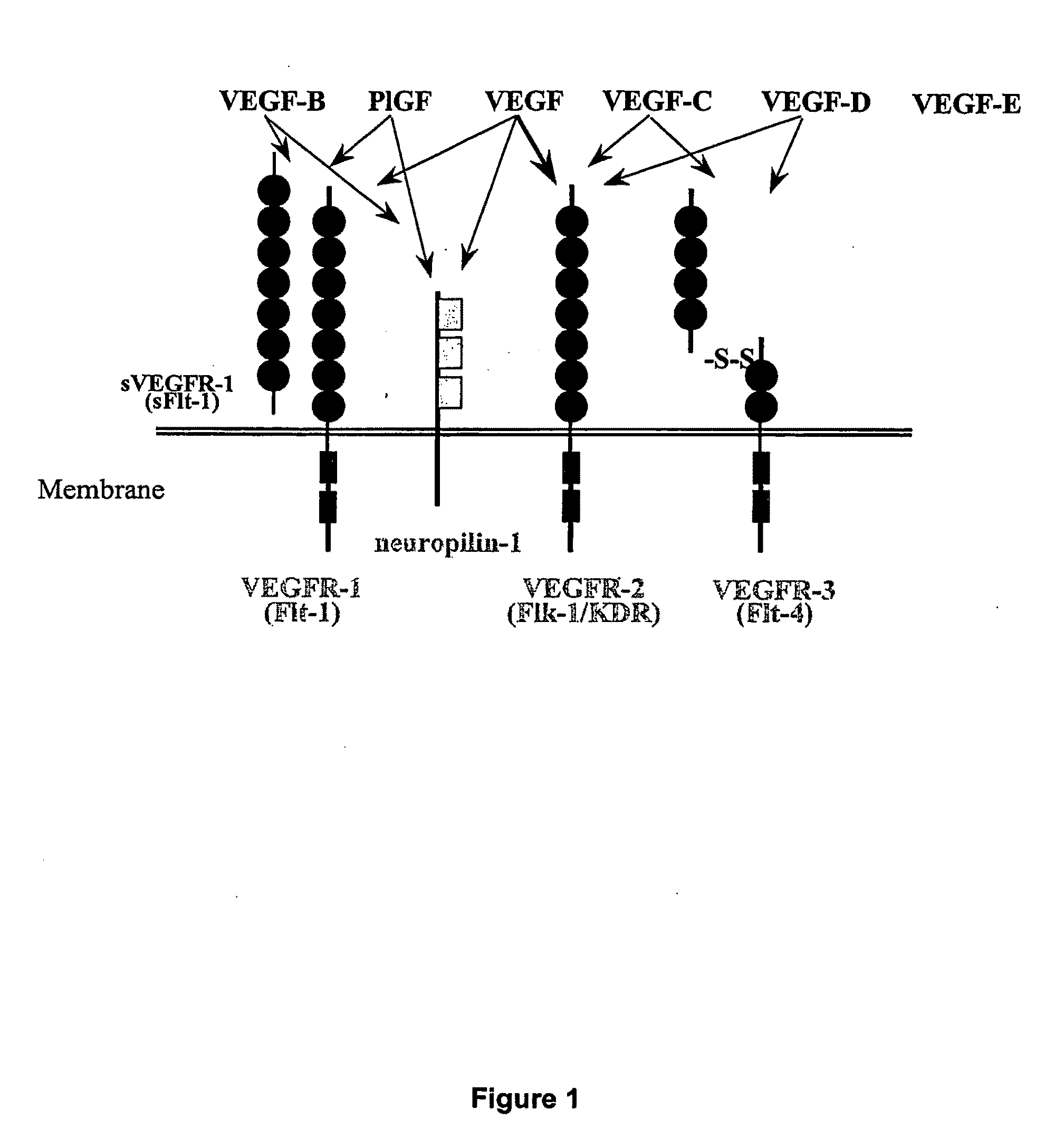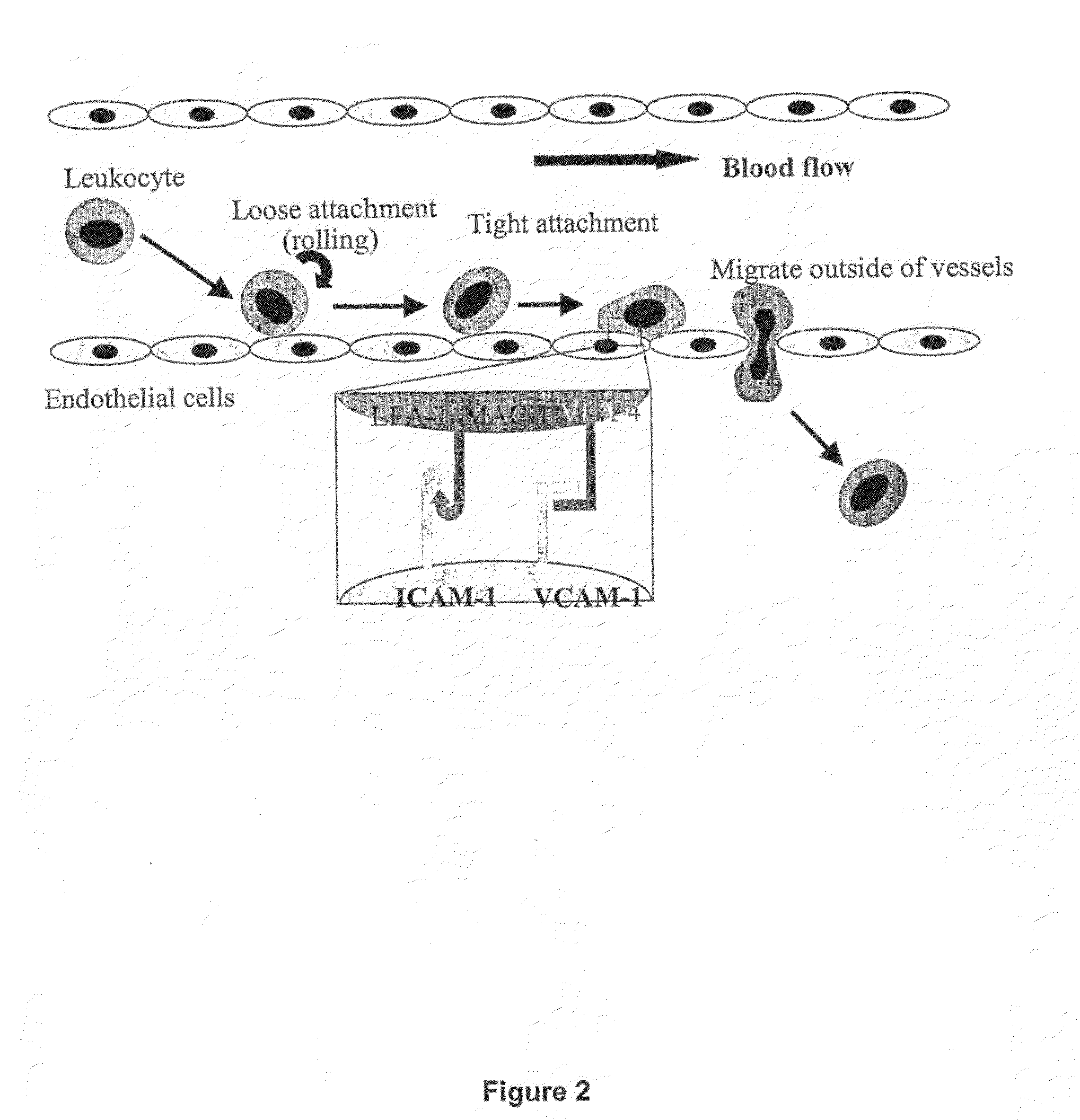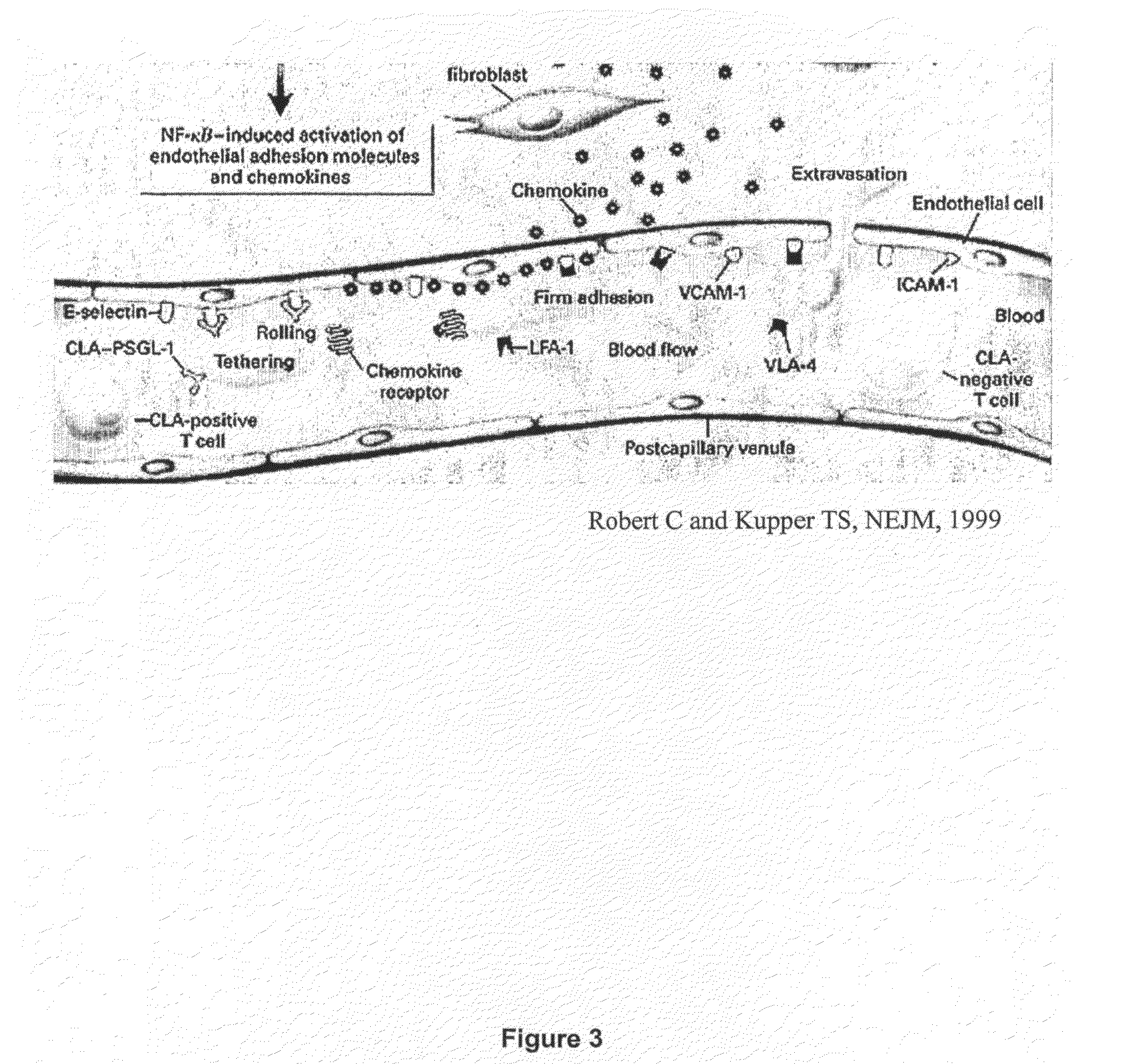Methods of Diagnosing and Treating an Inflammatory Response
a technology of inflammatory response and inflammatory response, applied in the field of diagnosis and treatment of inflammatory response, can solve the problem of high mortality rate of 25-30%
- Summary
- Abstract
- Description
- Claims
- Application Information
AI Technical Summary
Benefits of technology
Problems solved by technology
Method used
Image
Examples
example 1
sFlt-1, VEGF, and PlGF and Inflammatory Response
[0080]A pronounced upregulation of plasma VEGF and PlGF levels in both the lipopolysaccharide (LPS)-induced endotoxemia mouse model and the cecal ligation puncture (CLP) mouse model is observed (FIGS. 4a-4b). Intraperitoneal administration of lipopolysaccharide (LPS) in mice resulted in a time-dependent increase in plasma VEGF and PlGF concentrations, with peak levels (477 pg / ml and 4311 pg / ml, respectively) occurring at 24 h (FIG. 4a). By contrast, circulating levels of IL-6 and TNF-α were maximal at the earliest time point measured (6 h). In a CLP model of sepsis, peak levels of VEGF (137.26 pg / ml) and PlGF (71.25 pg / ml) occurred at 24 h and 12 h, respectively (FIG. 4b). In a mouse model of Escherichia coli pneumonia, plasma VEGF levels were not significantly altered, whereas PlGF levels were increased (23.01 pg / ml) at 6 h (FIG. 4c).
[0081]Human Data
[0082]In human subjects, the systemic administration of LPS resulted in elevated circu...
example 2
Diagnosing an Inflammatory Response
[0104]The present invention provides assays useful in the diagnosis of an inflammatory response such as sepsis, severe sepsis, and septic shock, based on the discovery that serum levels of VEGF, PlGF, and sFlt-1 are increased in an inflammatory response. Accordingly, diagnosis of inflammatory response can be performed by measuring the level of expression or activity of VEGF, PlGF, and sFlt-1 in a sample taken from a subject. This level of expression or activity can then be compared to a control sample, for example, a sample taken from a control subject, and an increase in VEGF, PlGF, or sFlt-1 relative to the control is taken as diagnostic of an inflammatory response, or being at risk of or having a propensity to develop an inflammatory response.
[0105]Analysis of levels of VEGF, PlGF, or sFlt-1 polypeptides, or activity of the polypeptides, may be used as the basis for screening the subject sample, e.g., a sample comprising blood or urine. Methods ...
example 3
Screening Methods for Identification of Candidate Compounds
[0111]The invention also provides screening methods for the identification of compounds that bind to, or modulate expression or activity of VEGF, PlGF, or sFlt-1, that may be useful in the treatment of an inflammatory response such as sepsis, severe sepsis, or septic shock Useful compounds decrease the expression or activity of VEGF, increase or decrease the expression or activity of PlGF, or increase the expression or activity of sFlt-1.
Screening Assays
[0112]Screening assays to identify compounds that decrease VEGF expression or activity, increase or decrease PlGF expression or activity, or increase sFlt-1 expression or activity are carried out by standard methods. The screening methods may involve high-throughput techniques. In addition, these screening techniques may be carried out in cultured cells or in non-human organisms. Screening in these organisms may include the use of polynucleotides homologous to human VEGF, PlG...
PUM
| Property | Measurement | Unit |
|---|---|---|
| temperatures | aaaaa | aaaaa |
| temperatures | aaaaa | aaaaa |
| temperatures | aaaaa | aaaaa |
Abstract
Description
Claims
Application Information
 Login to View More
Login to View More - R&D
- Intellectual Property
- Life Sciences
- Materials
- Tech Scout
- Unparalleled Data Quality
- Higher Quality Content
- 60% Fewer Hallucinations
Browse by: Latest US Patents, China's latest patents, Technical Efficacy Thesaurus, Application Domain, Technology Topic, Popular Technical Reports.
© 2025 PatSnap. All rights reserved.Legal|Privacy policy|Modern Slavery Act Transparency Statement|Sitemap|About US| Contact US: help@patsnap.com



